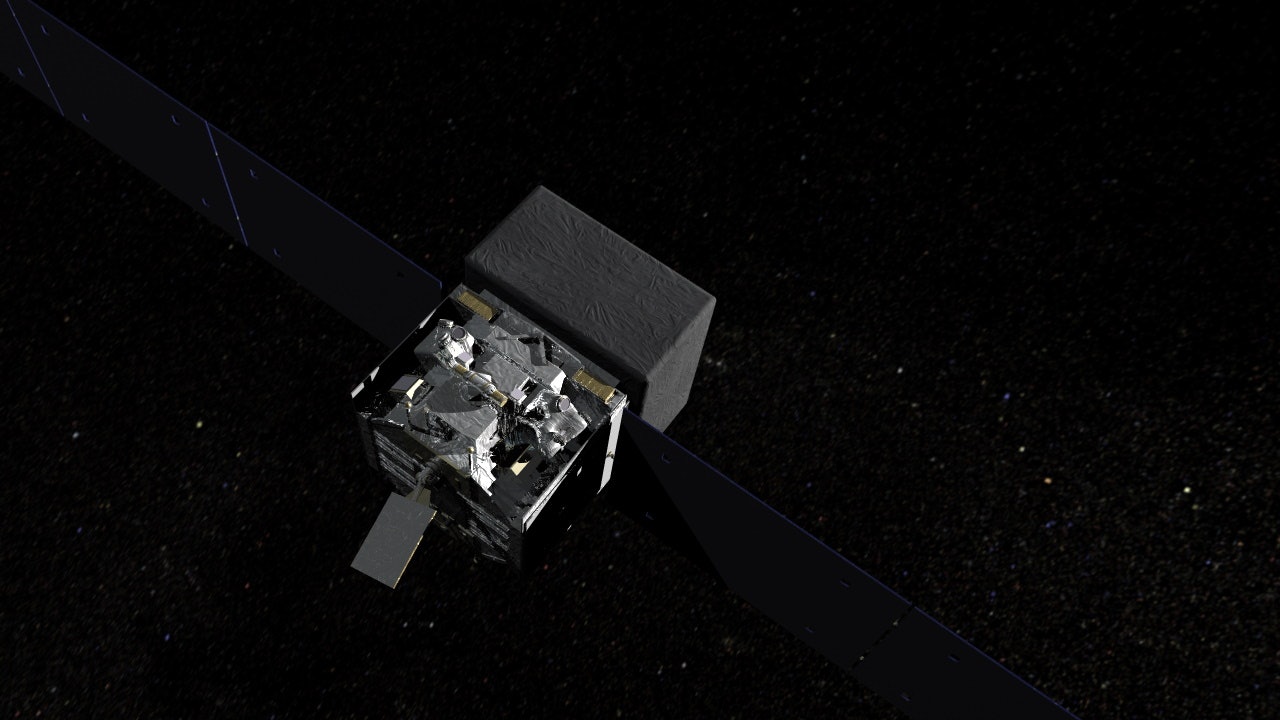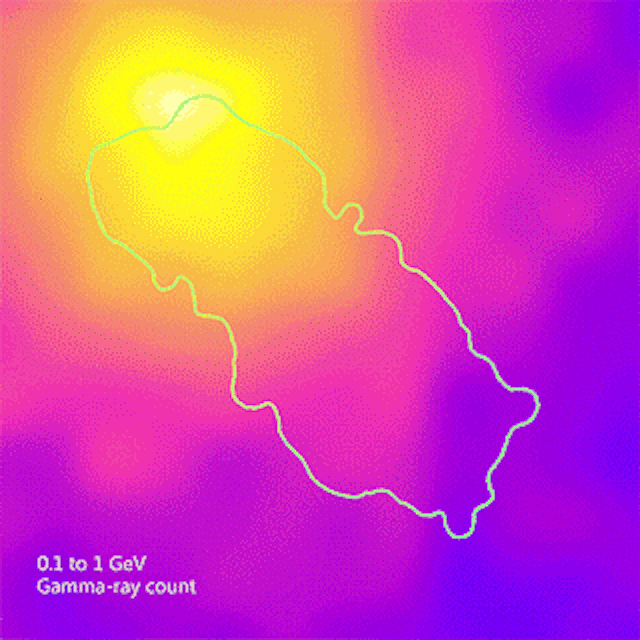
The 10,000-year-old remnant of a supernova 2,600 light years away is acting like a giant particle accelerator, and it’s flinging cosmic rays out across the galaxy — like the Large Hadron Collider on an astronomical scale.
Data from NASA’s Fermi Space Telescope on the supernova remnant G106.3+1.7 is the first time astrophysicists have identified an actual source for the high-speed, energetic particles called cosmic rays, stripped particles (mostly protons) that move at nearly the speed of light. They published their findings in a recent paper in the journal Physical Review Letters.
What’s new — Instruments on Earth and in space have measured the speed and other properties of incoming cosmic rays, but they’ve never been able to trace a cosmic ray back to its source or identify a specific object in space that produces them. Physicists call these hypothetical objects “PeVatrons,” because they accelerate protons until they carry several PeV of energy (a PeV is 1,000 trillion electron volts, which can also be written as a million billion electron volts). And physicist Ke Fang of the University of Wisconsin, Madison, and her colleagues say they’ve finally found one.
A supernova remnant 2,600 light years away from Earth, with the not-so poetic name G106.3+1.7, emits extremely high-energy gamma rays, up to trillions of electron volts (eV). Fang and her colleagues’ analysis suggests that the best explanation for those high-energy gamma rays is that cosmic rays, launched from the shock wave of the supernova explosion, are colliding with clouds of gas in the surrounding nebula.

Why It Matters — One hundred ten years after physicist Victor Hess discovered cosmic rays by carrying scientific instruments 5,300 meters into the sky in a hot air balloon, we understand these high-speed, high-energy particles — and their effects on Earth’s atmosphere, computer chips, and astronauts in space — reasonably well.
When they collide with Earth’s atmosphere, cosmic rays ionize nitrogen and oxygen molecules, triggering chemical reactions that have helped shape our planet’s chemistry. They also produce the radioactive isotope carbon-14, which is used in radiocarbon dating. In space, these high-energy particles can be harmful to astronauts outside Earth’s magnetic field. And when a cosmic ray strikes a computer chip, or microprocessor, it can cause small memory errors.
But where cosmic rays come from still remains a mystery.
Previous research suggests these particles are accelerated to almost light speed at the edges of black holes in active galactic nuclei and, more often, in the shock waves of massive stellar explosions.
“The precise nature of these sources, which we call PeVatrons, has been difficult to pin down,” says Fang in a statement.
When a massive star explodes, subatomic particles like protons get trapped in the shockwave of that explosion as it travels outward into space. As the protons bounce back and forth across the shockwave, they gain speed and energy until they’re finally moving fast enough to break free of the shockwave’s magnetic field and zip out into space. Sometimes they’re moving almost fast enough to escape our galaxy’s gravity entirely.
The problem is that cosmic rays don’t fly in a straight line. Those speedy particles are also electrically charged, so they interact with the galaxy's magnetic field, which bounces them around so much that it’s nearly impossible to trace a cosmic ray back to its source. And that, in turn, makes it difficult for scientists to confirm their theories about where and how these super-energetic, super-fast particles get supercharged in the first place.
Here's the Background — When cosmic rays run into other matter, like the expanding cloud of gas around a supernova remnant, the collision produces a bright flare of gamma rays. Those rays of light, unlike the charged particles that make up cosmic rays, follow a straight path across the galaxy, which means astronomers can see where they come from.
In other words, looking for high-energy gamma ray sources offers astrophysicists like Fang and her colleagues the best chance of finding a PeVatron.
A massive star explodes in a supernova about every 50 to 100 years in our galaxy, and so far, astronomers have found the remnants of about 300 of these stellar explosions. Out of those 300, just a few emit gamma rays at high enough energies to make the list of potential PeVatron suspects. G106.3+2.7 has been near the top of that list for more than a decade.
G106.3+2.7 is a vaguely comet-shaped cloud of gas with a bright pulsar (known as J2229+6114) at its northern end. Both the expanding gas cloud and the pulsar are the remains of a massive star that died a fiery, explosive death about 10,000 years ago. Fermi and several other observatories detected high-energy gamma rays from within the supernova, and Fang and her colleagues suspected that they might be the product of freshly-minted cosmic rays colliding with the gas cloud.
But first, they had to rule out the lower-energy gamma rays from the pulsar, which were bright enough to drown out nearly everything else. A pulsar sends out beams of radiation in just two directions, so it’s a bit like a rotating lighthouse beacon in space, so Fang and her colleagues looked at the data from periods when the pulsar’s beam was pointed away from Earth. Ruling out the pulsar’s radiation allowed the astrophysicists to see a source of even higher-energy gamma rays — 10 to 500 billion electron volts — somewhere in the middle part of the cloud.

“The catch is that electrons accelerated to a few hundred trillion electron volts can produce the same emission,” says Henrike Fleischack, a NASA Goddard Space Flight Center physicist and a co-author on the study, in a statement. In other words, protons with a few thousand trillion electron volts of energy, or electrons with a few hundred trillion electron volts of energy, can both collide with gas clouds to produce gamma rays with 10 to 500 billion electron volts of energy.
It took 12 years of data from Fermi and a lot of analysis to show that accelerated protons, colliding with the gas cloud, were probably producing the high-energy gamma rays Fermi and other observatories had spotted.
“With the help of 12 years of Fermi data, we think we’ve made the case that G06.3+2.7 is indeed a PeVatron,” says Fleischack.
What’s Next – Fang and her colleagues, along with other teams of astronomers, will keep searching the skies for high-energy gamma rays that might reveal cosmic rays slamming into the clouds of a supernova.
“More of them might be revealed through future observations by Fermi and very-high-energy gamma-ray observatories,” says Fang.
Eventually, the results could shed light on how many sources of these objects there are in the galaxy, and what types of supernovae are most likely to produce them.







